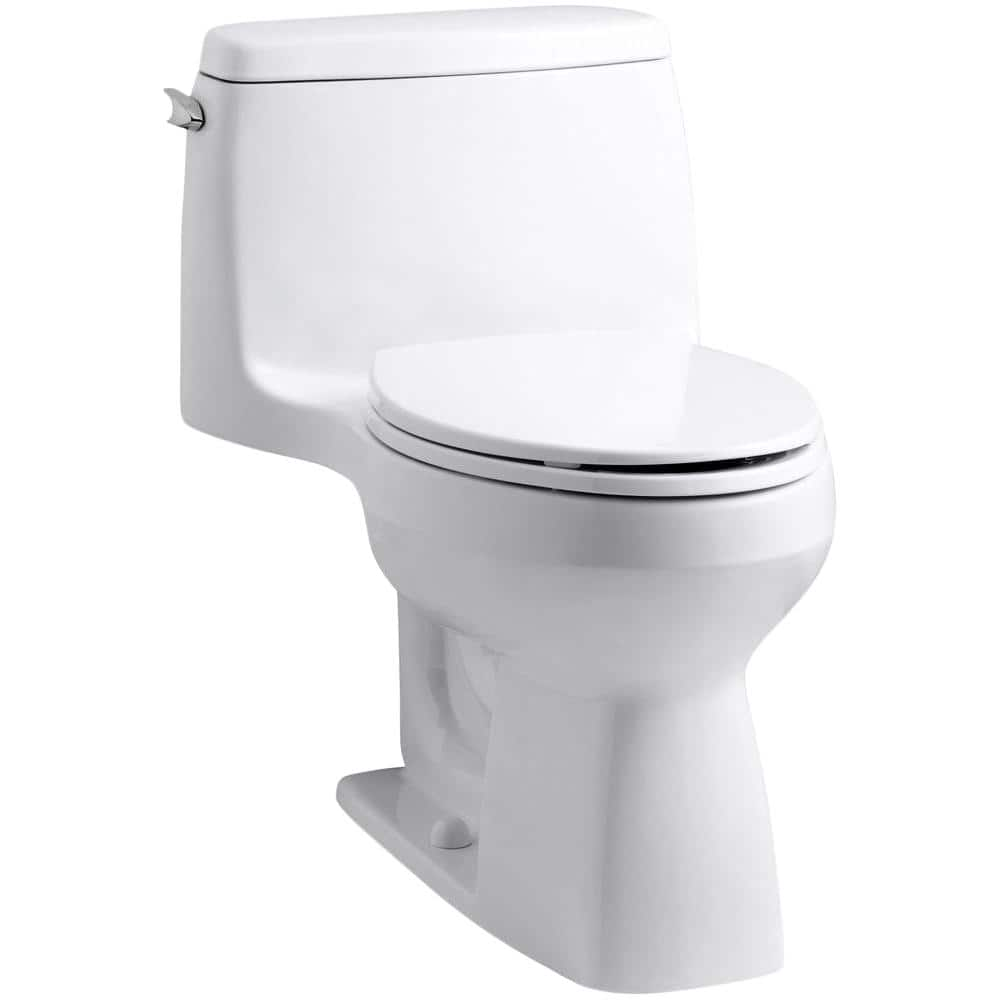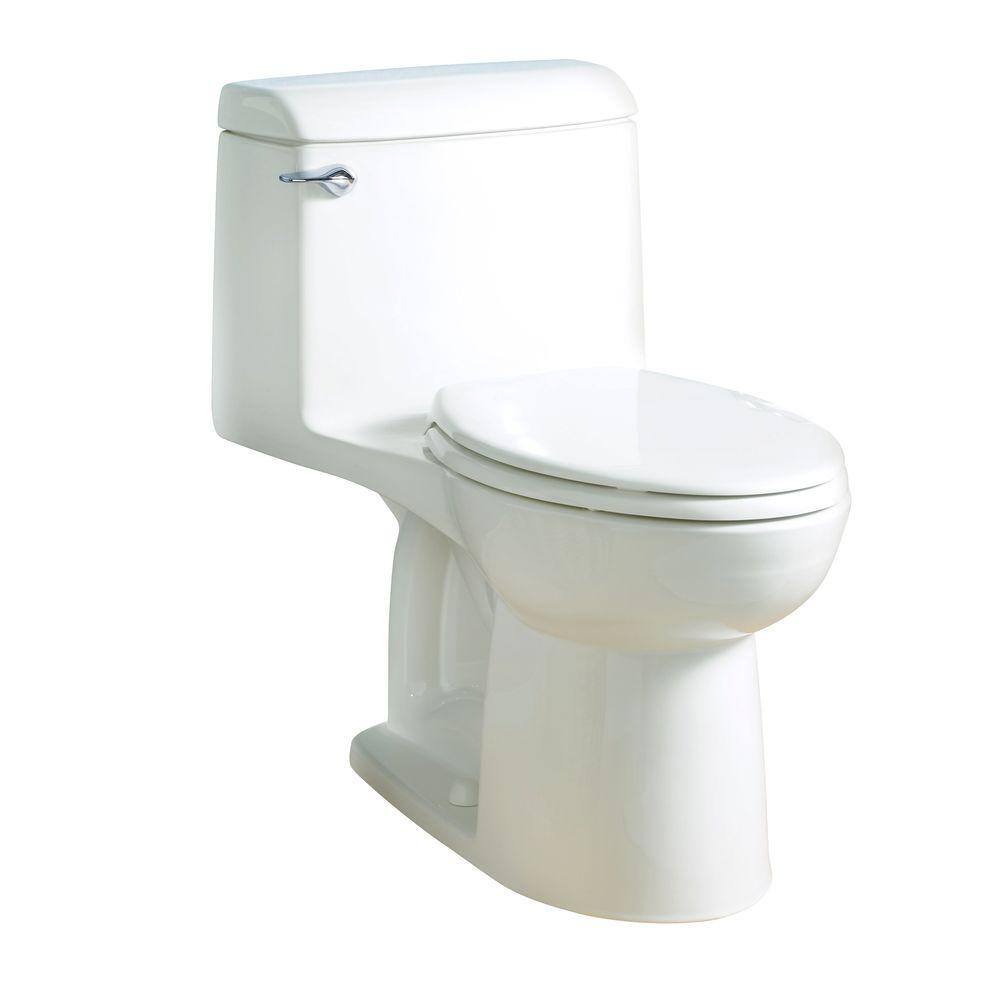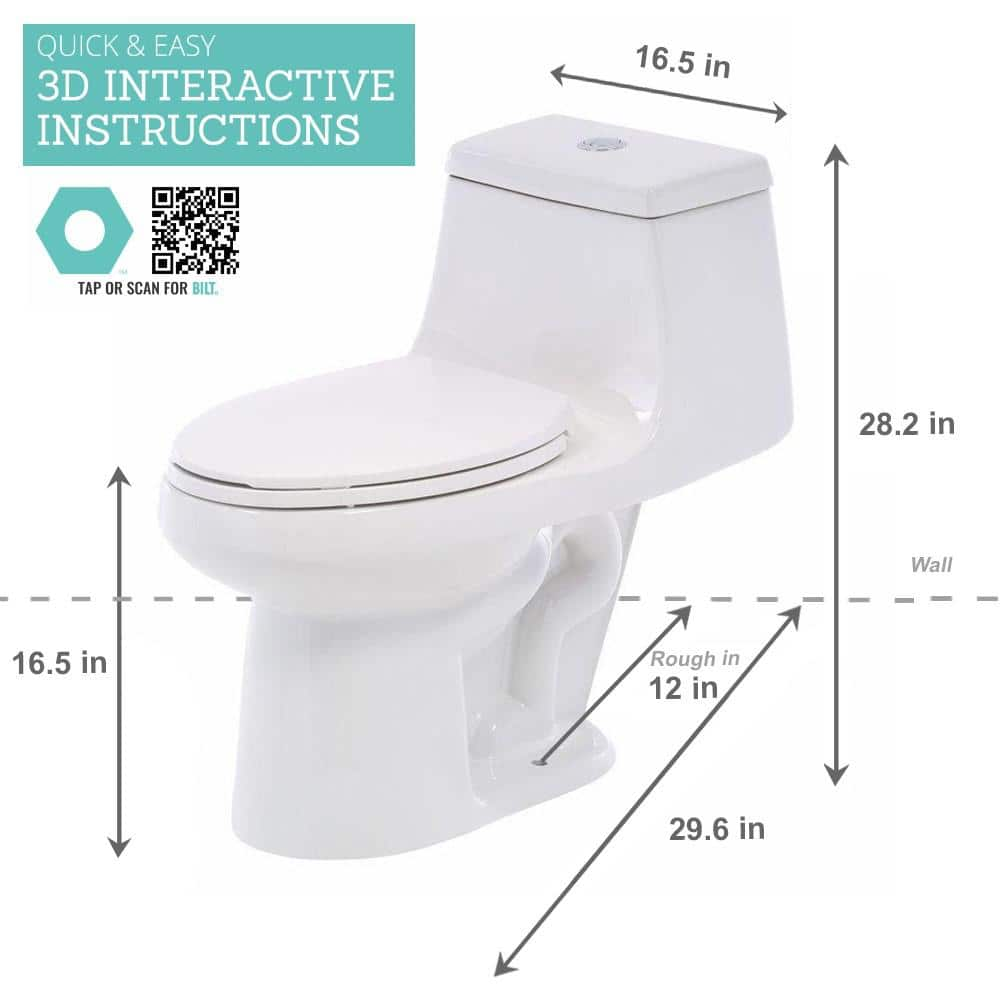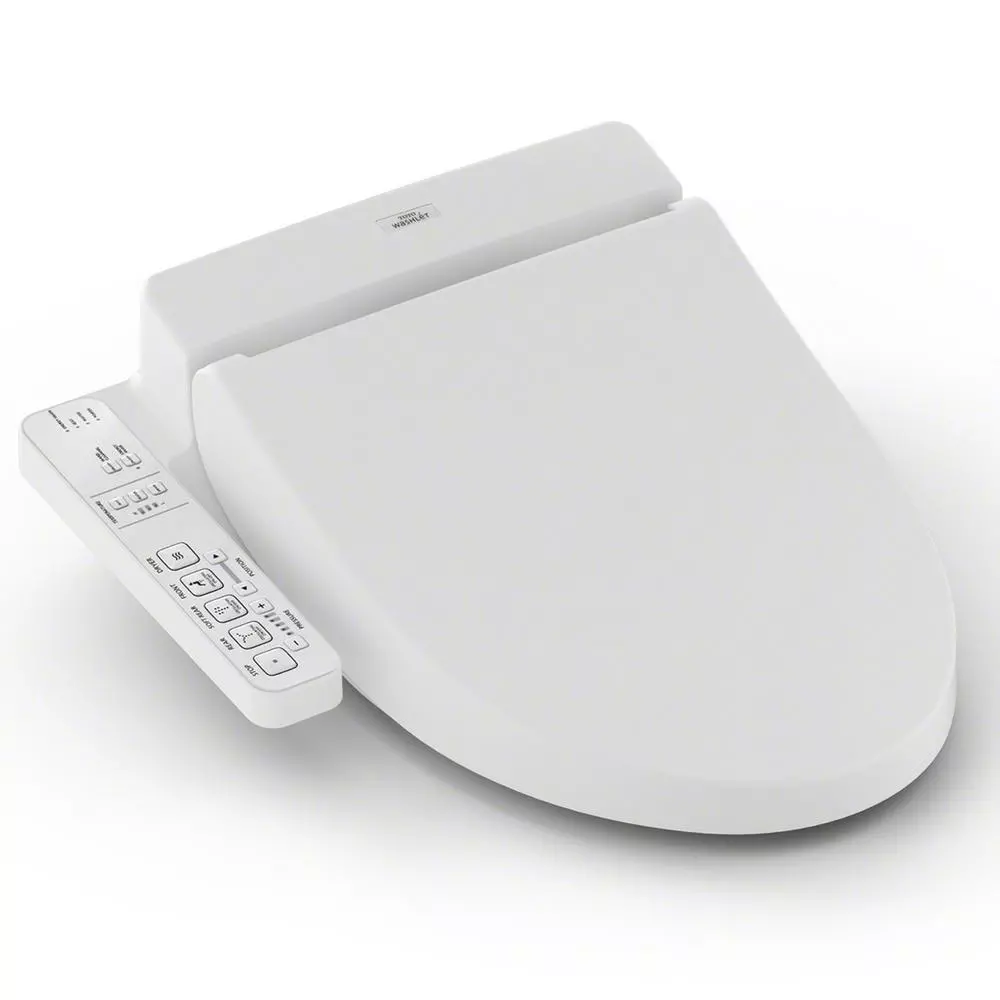KOHLER Santa Rosa Comfort Height 1-Piece 1.28 GPF Compact Single Flush Elongated Toilet in White, Seat Included
Easy install with included toilet seat, wax ring, and hardware. KOHLER AquaPiston releases water from 36 degrees around. Comfort Height offers chair-height seating (about 2 in. taller).
This Santa Rosa toilet’s 1-piece design adds a contemporary look to your bathroom while conserving space with a compact elongated bowl. Its 1.28 Gal. high-efficiency flush provides significant water savings of up to 16,500 GPY, versus an old 3.5 Gal. toilet, without sacrificing performance. A chair-height, elongated seat makes it comfortable to use.
- 1-piece toilets integrate the tank and bowl into a seamless, easy-to-clean design
- Compact elongated bowl offers added comfort while occupying the same space as a round-front bowl
- Comfort height feature offers chair-height seating that makes sitting down and standing up easier for most adults
- 1.28 GPF (gallons per flush)
- Standard left-hand trip lever included
- Brevia toilet seat included
- Supply line not included
- Available exclusively at The Home Depot
- Single-flush gravity uses the force of gravity and a precision-engineered tank, bowl, and trapway to create a strong siphon during flushing
- Standard 12 in. rough-in
- Watersense toilets meet strict EPA flushing guidelines, including using at least 20% less water than 1.6 Gal. toilets
- Eligible for consumer rebates in some municipalities
- Includes wax ring and hardware
Additional information
| Bowl Height without Seat (in.) | 16.5 |
|---|---|
| Flush Valve Size (in.) | 3 |
| Product Depth x Height x Width (in.) | 27.75 x 28.1875 x 18.75 |
| Certifications and Listings | ADA Compliant |
| Manufacturer Warranty | 1-Year Limited Warranty |






by Rollie
I like the shape and ease of flushing with the Kohler. It’s better than the Amer Stan Cadet, which I also have 2 of.
by Chris
Very comfortable seat and just the right height. Stylish as well!
by Floyd
Easy to install, quiet flushing. Handle appears a little flimsy.
by Megan
We purchased three of these toilets as replacements to our 25 year old bathrooms and have had them installed for about one week. There have been a lot of complaints here about the top edge of the tank not being glazed and that it looks terrible. I guess “terrible” is in the eye of the beholder. If I look for it, I can see the unglazed edge, but it’s really barely noticeable. It probably depends somewhat on the lighting in the particular bathroom. We have them in bathrooms with only overhead lighting for two of them and one that has overhead lighting and a large window for natural direct indirect lighting as well. All of them look fine to both me and my wife. They seem to flush very well with no clogging so far. Hopefully that pattern holds up. The tank fills fast and the fill/shut off valve seems to work perfectly. There is no leakage from the tank so no constant running of water. They look nice and seem like a great purchase. Overall, we are VERY pleased with them.
by Jake
I really like this toilet. Comfortable and efficient!!